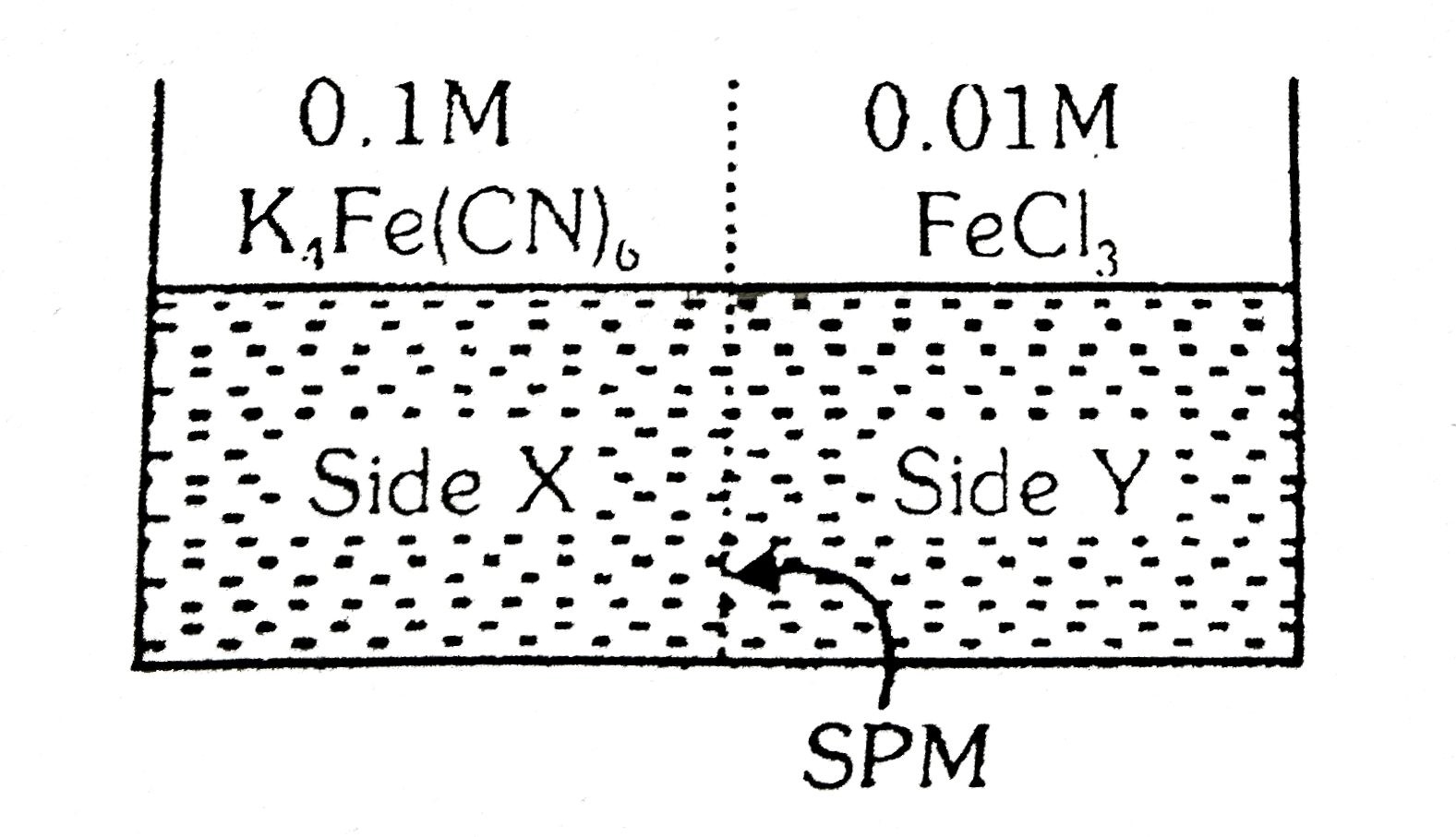Fe(OH)3 when treated with FeCl3 solution gives a reddish–brown solution. The process involved is:
Dispersion
Exchange of solvent
Peptization
None of these
The correct Answer is:C
To solve the question regarding the reaction of Fe(OH)3 when treated with FeCl3 solution, we can break it down into the following steps:
Step 1: Understand the Initial Reaction
When Fe(OH)3 (iron(III) hydroxide) is treated with FeCl3 (ferric chloride), it is important to recognize that Fe(OH)3 is a precipitate.
Step 2: Identify the Ions Involved
In the solution, FeCl3 dissociates into Fe3+ ions and Cl− ions. The Fe3+ ions are the key players in the reaction.
Step 3: Adsorption Process
The Fe3+ ions from the FeCl3 solution are adsorbed onto the surface of the Fe(OH)3 precipitate. This is a crucial step because it leads to the formation of a colloidal solution.
Step 4: Formation of Colloidal Solution
As the Fe3+ ions are adsorbed onto the Fe(OH)3 particles, the charged particles repel each other due to the same charge on their surfaces. This repulsion prevents the particles from aggregating and allows them to remain dispersed in the solution, thus forming a colloidal solution.
Step 5: Define Peptization
The process of converting a freshly prepared precipitate into a colloidal form by the addition of an electrolyte (in this case, FeCl3) is known as peptization.
Step 6: Conclusion
Therefore, the reddish-brown solution formed when Fe(OH)3 is treated with FeCl3 is a colloidal solution resulting from the peptization process.
Final Answer
The process involved is peptization.
---
When Fe(OH)3 (iron(III) hydroxide) is treated with FeCl3 (ferric chloride), it is important to recognize that Fe(OH)3 is a precipitate.
In the solution, FeCl3 dissociates into Fe3+ ions and Cl− ions. The Fe3+ ions are the key players in the reaction.
The Fe3+ ions from the FeCl3 solution are adsorbed onto the surface of the Fe(OH)3 precipitate. This is a crucial step because it leads to the formation of a colloidal solution.
As the Fe3+ ions are adsorbed onto the Fe(OH)3 particles, the charged particles repel each other due to the same charge on their surfaces. This repulsion prevents the particles from aggregating and allows them to remain dispersed in the solution, thus forming a colloidal solution.
The process of converting a freshly prepared precipitate into a colloidal form by the addition of an electrolyte (in this case, FeCl3) is known as peptization.
Therefore, the reddish-brown solution formed when Fe(OH)3 is treated with FeCl3 is a colloidal solution resulting from the peptization process.
The process involved is peptization.
Similar Questions
FeCl3 solution is acidic due to hydrolysis of :-
View SolutionThe sodium extract of an organic compound on treatment with FeSO4 solution, FeCl3 and HCl gives red solution. The red colour of
View SolutionA certain compound (X) when treated with copper sulphate solution yields a brown precipitate. On adding hypo solution the precipitate turns white. The compound is
View Solution(i)A black coloured compound (B) is formed on passing H2S through the solution of a compound (A) in NH4OH
(ii)(B) on treatment with HCl and potassium chlorate or aquaregia gives (A)
(iii)(A) on treatment with KCN gives a buff/reddish-brown coloured precipitate which dissolves in excess of this reagent forming a compound (C).
(iv)The compound (C) is changed into a compound (D) when its aqueous solution is boiled in air.
(v)The solution of (A) was treated with excess of NaHCO3 & then with bromine water. On cooling & shaking for some time, a green colour of compound (E) is formed.No change is observed on heating.
Identify (A) to (E) and give chemical equations.
View SolutionWhat happens when CCl4 is treated with AgNO3 solution ?
View SolutionA freshly prepared Fe(OH)3 precipitate is peptized by adding FeCl3 solution. The charge on the colloidal particle is due to preferential adsorption of
View SolutionA freshly prepared Fe(OH)3 precipitate is peptized by adding FeCl3 solution. The charge on the colloidal particle is due to preferential adsorption of
View SolutionFeCl3 on reaction with K4[Fe(CN)6] in aqueous solution gives blue colour.

These are separated by a semipermeable membrane AB as shown. Due to osmosis there is:
View SolutionFeCl3 on reaction with K4[Fe(CN)6] in aqueous solution gives blue colour. These are separated by a semi-permeable membrane AB as shown. Due to osmosis, there is

View SolutionConsider the following experiments and answer the questions at the end of it
(A) When Fe(CN)2 solution is treated with KCN solution species formed no longer gives tests of Fe2+ and CNΘ
(B) When K2SO4 solution is treated with A12(SO4)3 solution species formed gives tests of K⊕, A13+ and SO2−4
When the species formed in A is treated with FeCl3a bule colour is obtained It is due to formation of .
View Solution
